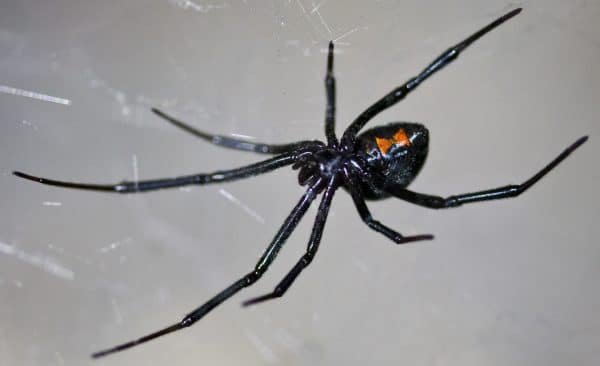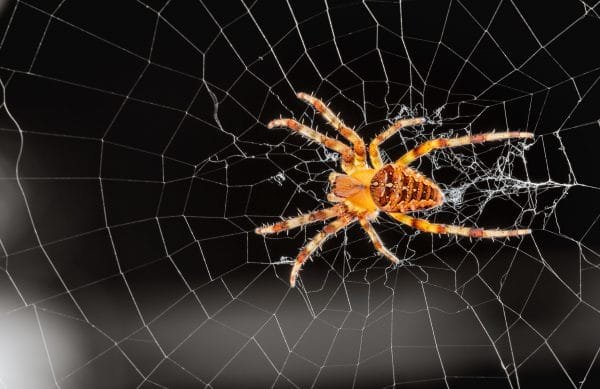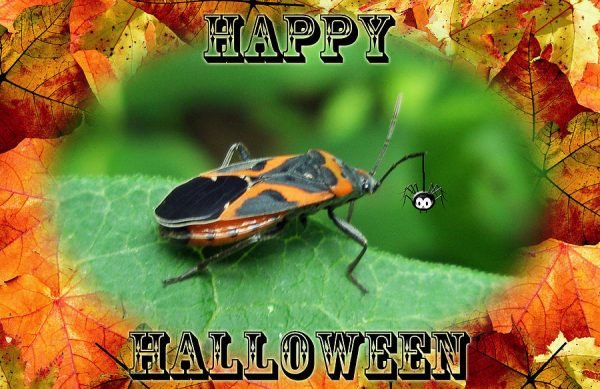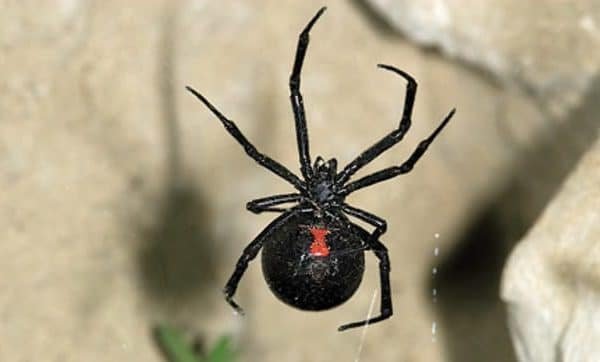Part One
If you have noticed an increase in spiders lately in and around your home, those webs you see might not be your clever Halloween decorations. There is another reason, it’s that time of year; it’s spider season!
It’s October, and as you drive around your town you see creative Halloween decorations on nearly every road. Spiders are creepy. They have eight legs, they dangle from ceilings, and create webs to catch their food. Enormous cobwebs and giant spiders make the perfect Halloween decorations, and we often associate their dark color and creepiness with old, spooky haunted houses. There is even an old superstition that believes seeing a spider on Halloween meant the spirit of a dead loved one was watching over you and your home!
While some people might like the idea of a familiar spirit protecting your home from danger, for those of us who are more scared of spiders than evil spirits we wanted to provide you with some information that you might find useful to help understand spiders. We wanted to provide you with some DIY tips, and educate you on identifying the types of spiders in Michigan and help recognizing them. We also want to assist you in making the decision about whether it is time to seek the professional help of Presidio Pest Management if you have spiders in and around your home.
This is a LOT of information, so we are going to do a three-part series over the next three weeks on these topics. Today we will focus on identifying the different species of spiders in Michigan. Next week we will focus on common areas and locations spiders find desirable, and for our third part in our series, we will focus some DIY tips to try. We want to help you to keep spiders outside and not in your home!
The vast majority of spiders in Michigan are not venomous or dangerous, however, according to the Michigan Department of Natural Resources, there are two species of venomous spiders found in Michigan: the brown recluse and the black widow.
The brown recluse is not indigenous to Michigan and cannot live in temperatures colder than 40°F, so they are extremely rare in our state. It is believed that they have come in on trucks originating in the southern United States. The brown recluse is unusual because it has only six eyes (most spiders have eight) and has a violin-shaped marking on its back. The violin pattern is seen with the base of the violin at the head of the spider and the neck of the violin pointing to the rear. These small non-hairy spiders are yellowish-tan to dark brown in color with darker legs.
The northern black widow, on the other hand, is native to Michigan and can be found all throughout Michigan, especially in the western lower peninsula. The black widow is small, only about a 1/2 inch long (1.5 inches if you include the legs). They are entirely black except for a bright red, hourglass shaped marking on the abdomen of the female (note that the hourglass marking is broken in the middle). Males will lack this distinctive hourglass marking, but may have red or yellow bands on their back or abdomen.
Below are descriptions and information of the most common spiders Michigan residents are more likely to encounter in their homes.
Common House Spider: They vary in size from 6mm to 2.5cm and may be a variety of colors, though they always have rather dull hues, allowing them to blend into their environment. They feed on such household pests such as flies, mosquitoes, wasps and ants. House spiders will bite if cornered or grabbed, but their bites are relatively non-toxic and no more painful than a bee sting.
Wolf Spider: Like house spiders, wolf spiders may vary in size, though on the larger end they can be quite a bit bigger than house spiders, up to 1.2 inches; their bodies may be a little bit larger relative to other house spiders. Like house spiders, they may be any variety of dull colors, though they are usually some hue of brown. Wolf spiders are active, agile hunters. Rather than spinning webs and waiting for prey, the wolf spider hunts its prey, chasing it and pouncing upon it.
Daddy Long-Legs: They are easily identified by their extremely long legs. This spider is commonly found indoors, especially in cellars and basements. Contrary to popular belief, the daddy long-legs (cellar spider) is not venomous. Daddy long-legs prefer to live on ceilings and will commonly make their webs in the corners of living room ceilings, but also in garages, cellars or under eaves. It preys on mosquitoes, other spiders and even other daddy long-legs if food is scarce. They are non-aggressive, will rarely bite and pose no significant danger to humans.
Orb-Weaver Spider: These orb-weaver spiders build the spiral wheel-shaped webs often found in gardens, fields and forests. There are over 10,000 varieties of orb-weaver spiders in the world; in fact, they make up 25% of all spiders worldwide. The orb-weavers are tremendous workers, sometimes building a new and complete web from scratch every single day. Orb-weaver spiders are also common in barns; orb-weavers do not generally take up residence in homes as often as house spiders and are usually not a problem.
Jumping Spiders: a very large branch of the spider family. Jumping spiders are common both indoors and outdoors throughout the United States. They take their name from their method of hunting prey by leaping quickly upon it, jumping up to half an inch and pouncing upon prey. Jumping spiders usually have larger eyes than other species and have more hair. They usually grow no larger than one inch and are a dull, earthy color.
Most people concerned about spiders in the home are worried about spider bites. Except for the black widow and the rare brown recluse, none of the other spiders in Michigan pose a threat to human health from their venom. This is not to say that other spiders will not bite; any spider will bite, and even the bites of non-venomous spiders can be painful. Spiders will bite if they are picked up or handled, but most spider bites do not occur in this manner. A more common manner of getting bit occurs when people are bit in their sleep. A spider will be prowling about under the covers, attracted by the warmth and darkness. A person sleeping will unknowingly roll over or move and frighten the spider, which will then bite the sleeper before scampering away. The person wakes up with a painful bite, sometimes mistaking the spider bite for bed bugs. Another concerning threat are spider eggs, if a spider is allowed to freely lay eggs in the home this will only beget more spiders.
At Presidio Pest Management we are professionals that can help you keep spiders out of your home this fall, as well as year-round. If you want to take every precaution you can from these creepy-crawlers, please give us a call.





